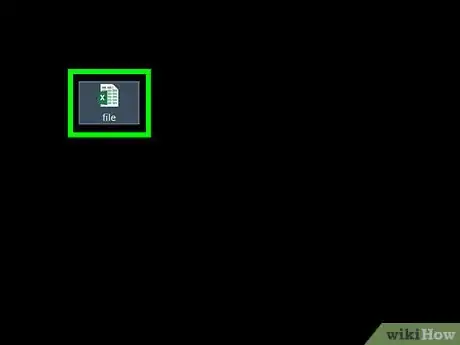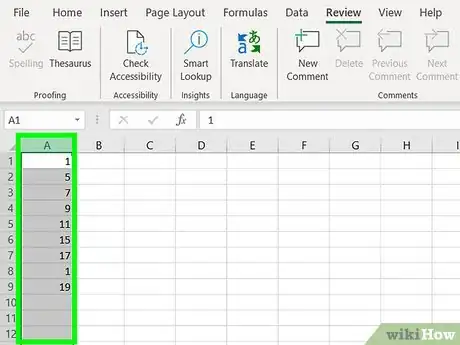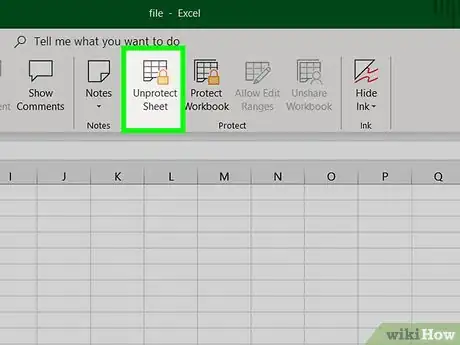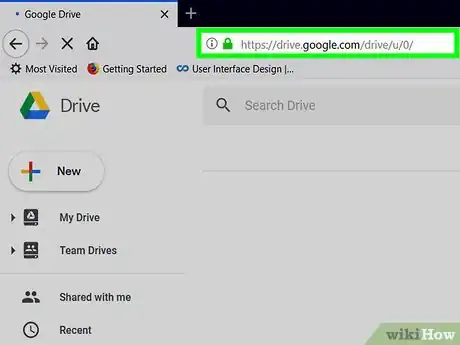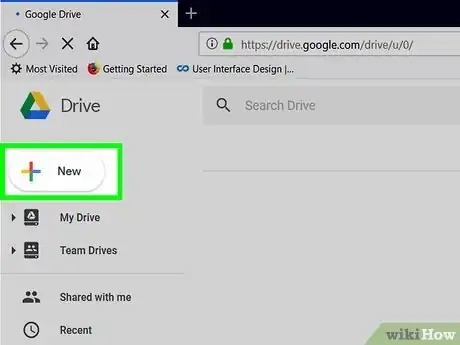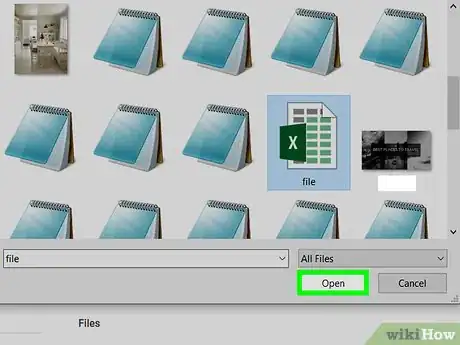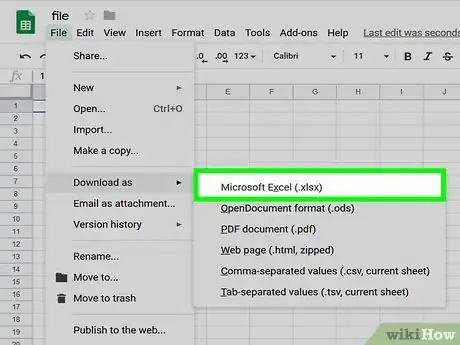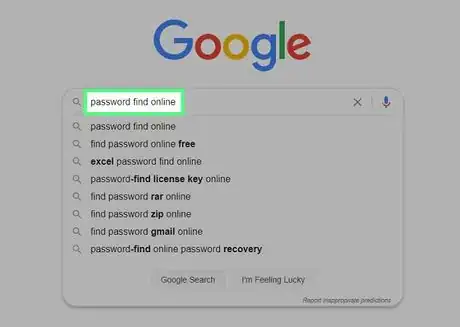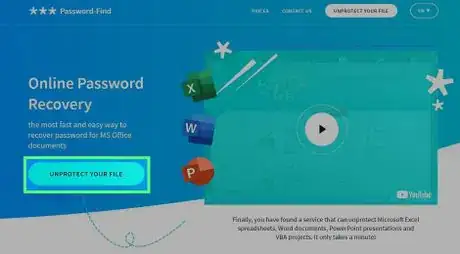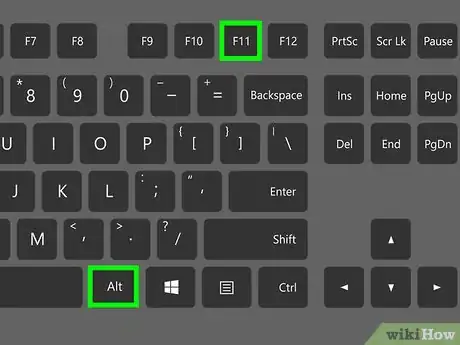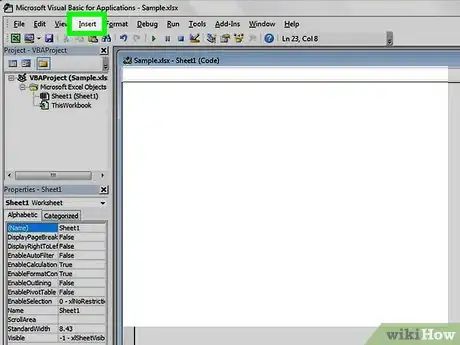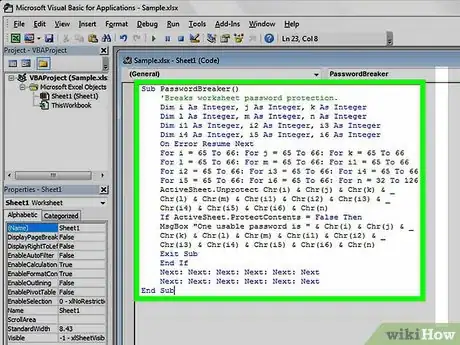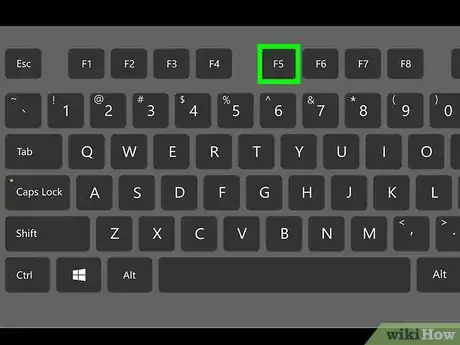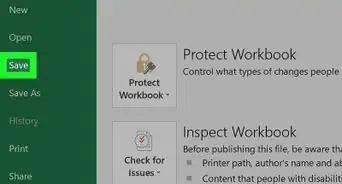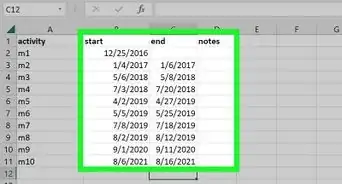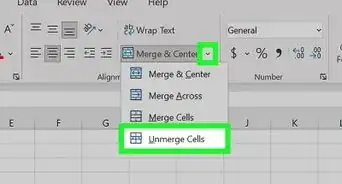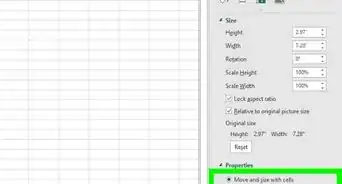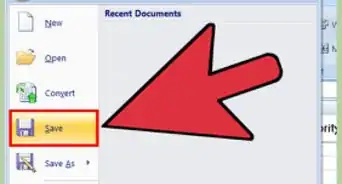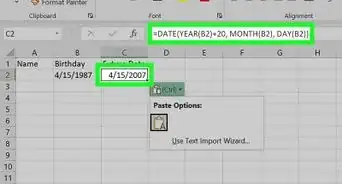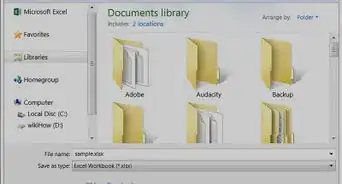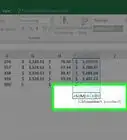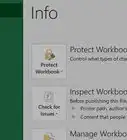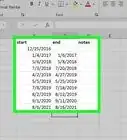This article was co-authored by wikiHow staff writer, Nicole Levine, MFA. Nicole Levine is a Technology Writer and Editor for wikiHow. She has more than 20 years of experience creating technical documentation and leading support teams at major web hosting and software companies. Nicole also holds an MFA in Creative Writing from Portland State University and teaches composition, fiction-writing, and zine-making at various institutions.
This article has been viewed 556,448 times.
Learn more...
Do you need to view or edit a protected Excel worksheet? If the sheet is locked with a password and you're not sure what it is, you can easily use Google Sheets or a VBA script (in earlier versions of Excel) to remove the password. This wikiHow article will show you how to unlock a protected Excel spreadsheet with or without the password. If your entire Excel workbook is password-protected and you can't open it, you'll need to unlock the file first.
Steps
Using Microsoft Excel
-
1Open the workbook with a protected sheet in Microsoft Excel. You can usually do this by double-clicking the file's name on your computer.
-
2Right-click the tab for the protected sheet. Each sheet's tab appears along the bottom of Excel. The protected sheet often has a padlock icon in some versions of Excel. Right-click the tab (or the lock icon) to open the context menu.[1]
- If multiple sheets are protected, you'll need to remove protection on each sheet separately.
Advertisement -
3Click Unprotect Sheet. If the sheet is not password-protected, it will unlock immediately. If not, you'll be prompted to enter a password into a pop-up window.
-
4Enter the password and click OK. If the password is correct, the sheet will become unprotected.
- If you don't know the password, see the Using Google Sheets method. This method lets you upload the file to Google Sheets, which removes all protections added in Excel.
- If you're using Excel 2010 or earlier and prefer not to upload to Google Sheets, see the Using VBA Code in Excel 2010 and Earlier method.
Uploading to Google Sheets
-
1Go to https://drive.google.com in a web browser. If you have a Google account, you can use Google Sheets (a free online app that's similar to Excel) to remove protection from all sheets in a workbook—even if you don't know the password.
- If you're not already signed into your Google account, follow the on-screen instructions to sign in now.
- If you don't have a Google account, see How to Make a Google Account.
-
2Click + New. It's at the top-left corner of the page.
-
3Click File Upload. This opens your computer's Open panel.
-
4Select the Excel file you want to edit and click Open. This uploads the file to your Google Drive.
-
5Double-click the Excel file in your Google Drive. You'll probably have to scroll down to find it. This opens a preview of the file.
-
6Click the Open with menu. It's at the top of the preview. A menu will expand.
-
7Click Google Sheets. Now that the file is open for editing in Google Sheets, any sheet protections added in Excel have been removed.
-
8Re-download the file to your computer. If you want to keep working on the file in Microsoft Excel rather than Google Sheets, you can download this newly-unprotected version of your workbook using the following steps:
- Click the File menu at the top-left corner of your sheet.
- Click Download As.
- Click Microsoft Excel (.xlsx) .
- Select a folder to save the file. If you want to keep the original version of the file (the one with a protected sheet) intact, type a new name for the file as well.
- Click Save to download the file.
Using an Online Service
-
1Search "password find online" and find an online password removal service.
-
2Click "Unprotect your file".
-
3Click "Browse" and choose the protected file.
-
4Choose "Remove password" radio button.
-
5Wait while the service removes your password.
-
6Download the unprotected file, if your file is small.
-
7Download a demo-file if your file is big. To get the whole file, you'll need to enter a license key.
Using VBA Code in Excel 2010 and Earlier
-
1Open the workbook that has a protected sheet in Excel. You can usually do this by double-clicking the file's name on your computer. Excel files usually end with the file extension .xls or .xlsx.
- Use this method if you have already tried unlocking a sheet but found that it's password-protected (and you don't know the password).
- This method will not work in Excel 2013 or later.
-
2Re-save the file in the xls format. If the file you're working on has the ".xlsx" extension (common if it was created or edited in newer versions of Excel), you'll only be able to use this method if you first convert it to the Excel 97-2003 (.xls) format. Here's how to do this:[2]
- Click the File menu at the top-right corner.
- Click Save As.
- Go to the folder in which you want to save the file.
- Select Excel 97-2003 (.xls) from the "Save as type" or "File Format" menu.
- Click Save. Follow the on-screen prompts to make any necessary conversions.
-
3Press Alt+F11 to open the Visual Basic Editor.
-
4Right-click the workbook's file name in the "Project - VBAProject" panel. It's at the top of the left panel. Make sure you right-click the option that contains the file's name (ends with ".xls"), which should be at the top. A menu will expand.[3]
-
5Click Insert on the menu. Another menu will expand.
-
6Click Module. This inserts a new module in which you'll paste some code.
-
7Copy the code. Highlight the code that follows this text, then press Ctrl+C (PC) or ⌘ Command+C to copy it:
Sub PasswordBreaker() 'Breaks worksheet password protection. Dim i As Integer, j As Integer, k As Integer Dim l As Integer, m As Integer, n As Integer Dim i1 As Integer, i2 As Integer, i3 As Integer Dim i4 As Integer, i5 As Integer, i6 As Integer On Error Resume Next For i = 65 To 66: For j = 65 To 66: For k = 65 To 66 For l = 65 To 66: For m = 65 To 66: For i1 = 65 To 66 For i2 = 65 To 66: For i3 = 65 To 66: For i4 = 65 To 66 For i5 = 65 To 66: For i6 = 65 To 66: For n = 32 To 126 ActiveSheet.Unprotect Chr(i) & Chr(j) & Chr(k) & _ Chr(l) & Chr(m) & Chr(i1) & Chr(i2) & Chr(i3) & _ Chr(i4) & Chr(i5) & Chr(i6) & Chr(n) If ActiveSheet.ProtectContents = False Then MsgBox "Password is " & Chr(i) & Chr(j) & _ Chr(k) & Chr(l) & Chr(m) & Chr(i1) & Chr(i2) & _ Chr(i3) & Chr(i4) & Chr(i5) & Chr(i6) & Chr(n) Exit Sub End If Next: Next: Next: Next: Next: Next Next: Next: Next: Next: Next: Next End Sub
-
8Right-click the new module and select Paste. The copied code now appears in the module window.
-
9Press F5 to run the code. Excel will now run the code, which can take several minutes. Once the code is finished running, a new password will appear on a pop-up window.
- The new password will be a random number of "As" rather than the original password.
-
10Click OK on the Password pop-up. A new password will appear but you won't need to write it down. Clicking OK will remove sheet protection automatically.[4]
- If you had to convert the file to an earlier format, you can now save the workbook again as an .xlsx file.
Community Q&A
-
QuestionWhat if I forgot the password to the document?
 Community AnswerTry to use method 2 above (Uploading to Google Sheets). The downloaded Excel sheet from Google Sheets will be unprotected, so no password is needed.
Community AnswerTry to use method 2 above (Uploading to Google Sheets). The downloaded Excel sheet from Google Sheets will be unprotected, so no password is needed. -
QuestionThe Google sheet method is not working.
 Margot FontenautCommunity AnswerIt won't work for a password to open the document, but it works fine for passwords restricting shared access. If you can open your file, but can't edit it, this method will work. If you can't open you file without entering password, it won't work. In such case you will need to use password cracking tools like Password-find, Rixler password cracker, Password recovery lastic to remove protection from your file. It's impossible to restore or bypass a password to open the document without special software.
Margot FontenautCommunity AnswerIt won't work for a password to open the document, but it works fine for passwords restricting shared access. If you can open your file, but can't edit it, this method will work. If you can't open you file without entering password, it won't work. In such case you will need to use password cracking tools like Password-find, Rixler password cracker, Password recovery lastic to remove protection from your file. It's impossible to restore or bypass a password to open the document without special software. -
QuestionI received Compile error Syntax error.
 Margot FontenautCommunity AnswerYou need to delete the phrase Breaks worksheet password protection. Compiler don't understand it and there you have the compile error cause of the syntax error. If VBA code is not your thing, you can use password removal apps like Password-find or Password Lastic to remove the password from your sheet.
Margot FontenautCommunity AnswerYou need to delete the phrase Breaks worksheet password protection. Compiler don't understand it and there you have the compile error cause of the syntax error. If VBA code is not your thing, you can use password removal apps like Password-find or Password Lastic to remove the password from your sheet.
References
- ↑ https://www.ablebits.com/office-addins-blog/2016/02/10/protect-unprotect-excel-sheet-password/
- ↑ https://www.ablebits.com/office-addins-blog/2016/02/10/protect-unprotect-excel-sheet-password/
- ↑ https://www.ablebits.com/office-addins-blog/2016/02/10/protect-unprotect-excel-sheet-password/
- ↑ https://uknowit.uwgb.edu/page.php?id=28850
About This Article
To unlock a sheet in an Excel workbook, right-click the sheet's tab and click Unprotect sheet. Enter the password, if prompted.
If you don't know the password, upload the sheet to your Google Drive, open it in Google Sheets, then re-download it to your computer.
